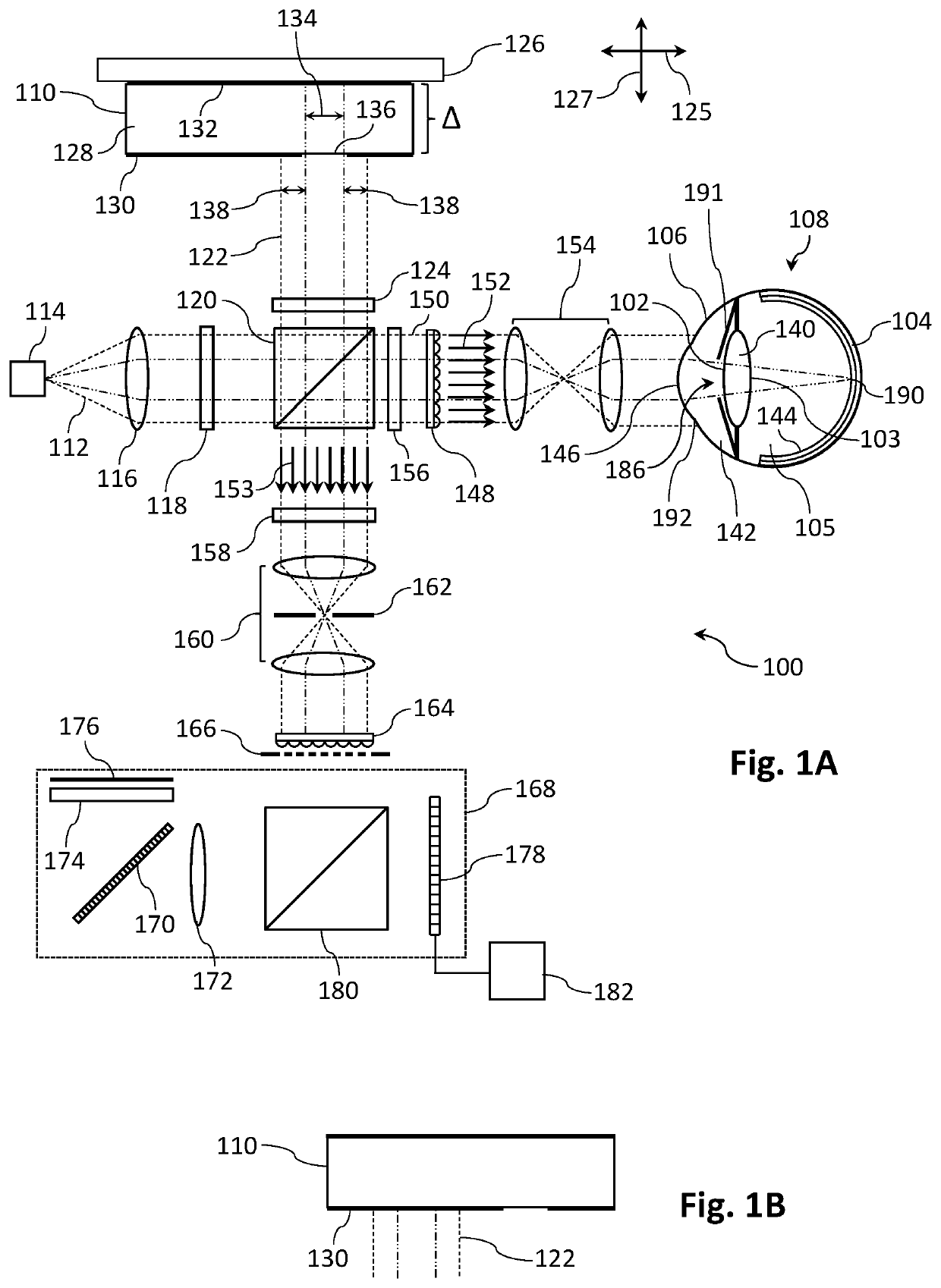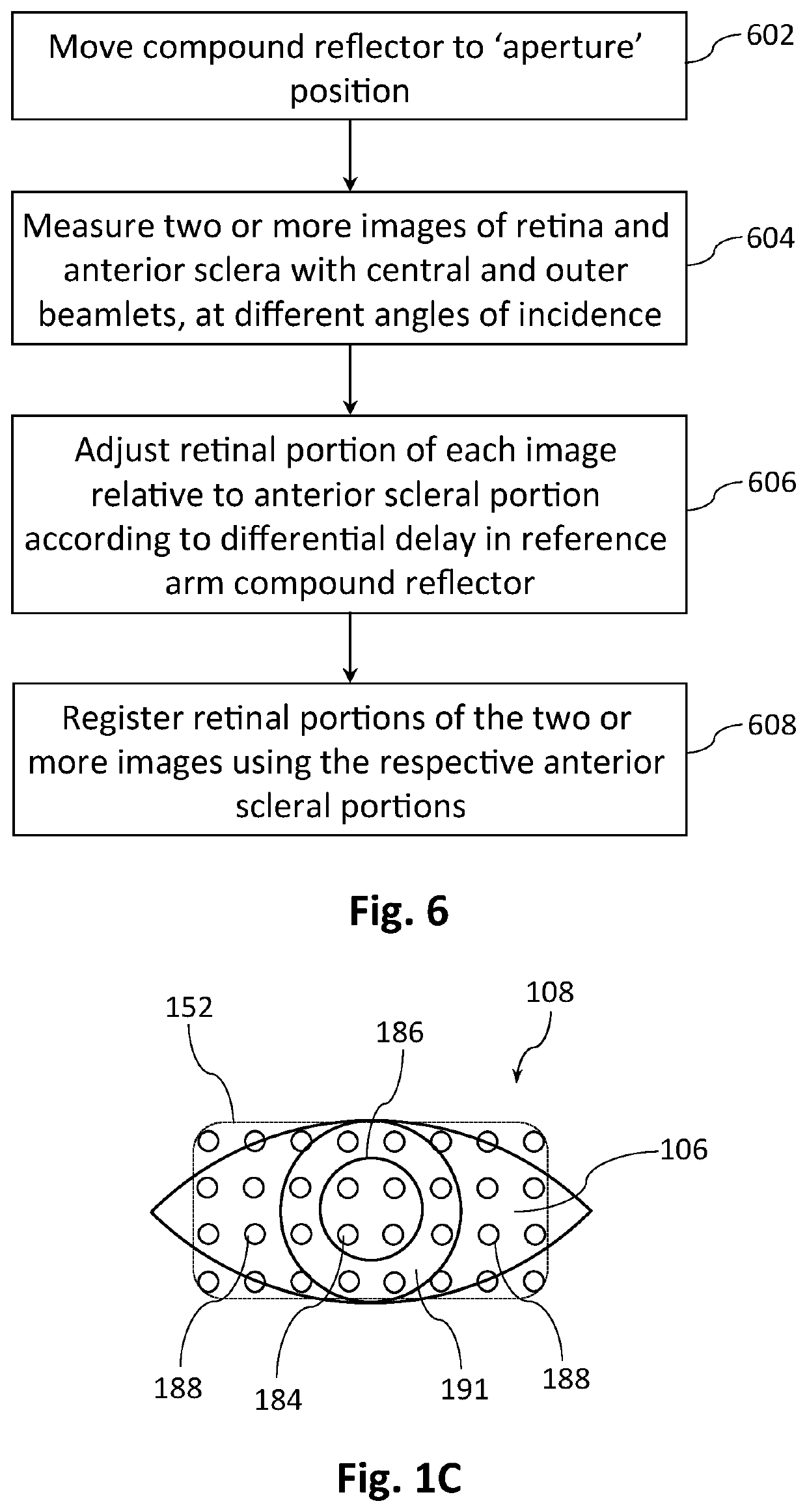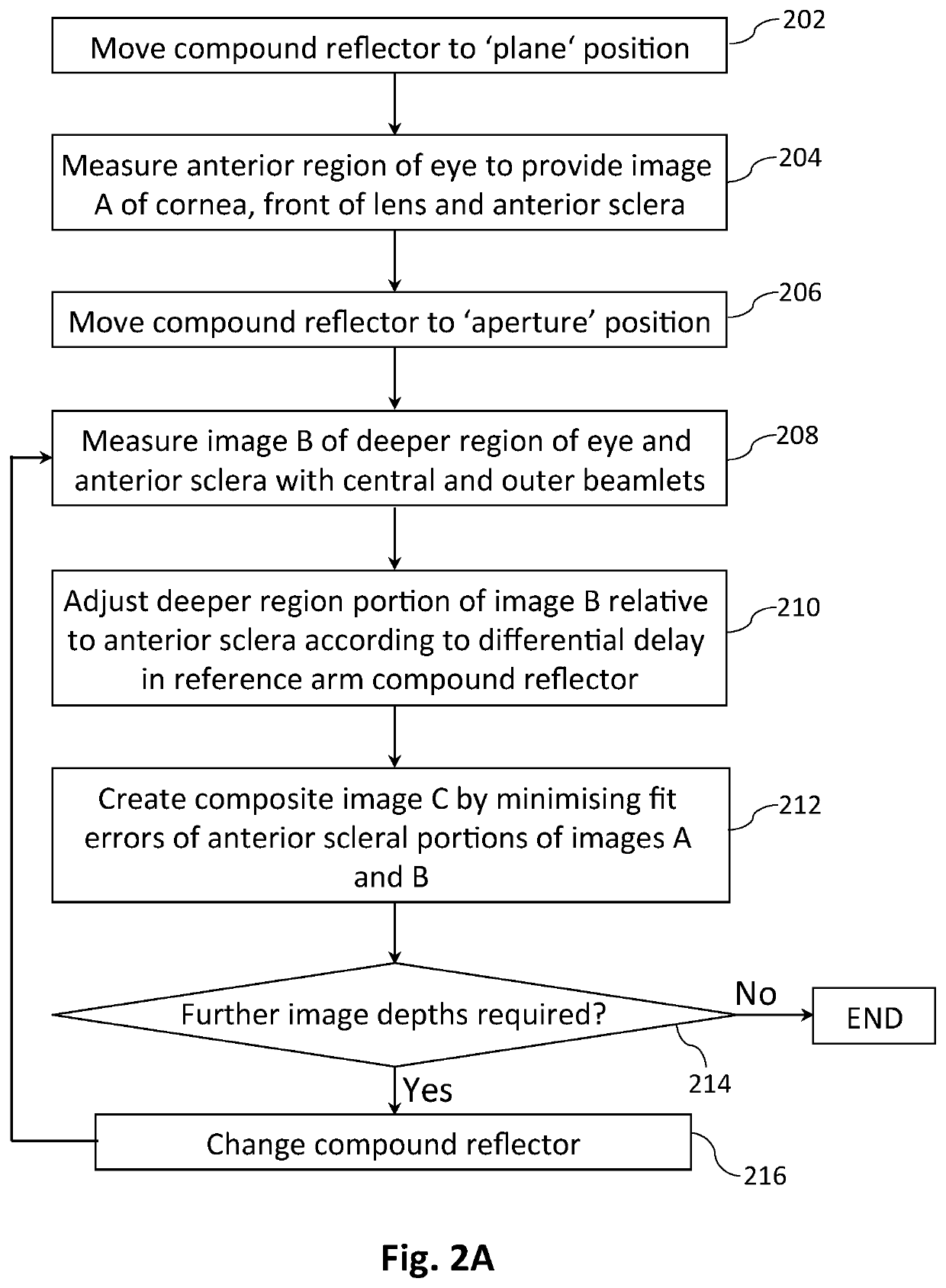Optical Coherence Metrology and Tomography with Improved Registration
a technology of optical coherence and tomography, applied in image analysis, medical science, diagnostics, etc., can solve the problems of complex equipment, high cost of mri, deformation and thinning of inner parts, etc., and achieve the effect of improving registration
- Summary
- Abstract
- Description
- Claims
- Application Information
AI Technical Summary
Benefits of technology
Problems solved by technology
Method used
Image
Examples
first embodiment
[0091]A first aspect of the present invention concerns spectral domain OCT apparatus and methods with increased depth of field, in particular having sufficient depth of field for single shot measurement of eye structures and parameters including eye length. FIG. 1A shows in schematic form a spectral domain OCT apparatus 100 according to the invention, suitable for ocular metrology or tomography with registration of intra-ocular structures, such as the anterior or posterior lens surfaces 102, 103 or the choroid 104, to the anterior sclera 106 of a sample eye 108. Light 112 from a broadband optical source 114 such as a superluminescent diode with centre wavelength 840 nm and bandwidth of 40 nm is collimated by a collimating element 116 such as a lens or a parabolic mirror, linearly polarised by a polariser 118 and then split by a polarisation beam splitting cube (PBS) 120 into reference and sample beams 122, 150. In preferred embodiments the reference arm includes a multi-length delay...
third embodiment
[0124]FIG. 5A shows in schematic form a modification of the sample arm optics of the apparatus 100 shown in FIG. 1A, to provide a spectral domain OCT apparatus according to the invention. This modification, which can also be applied to the sample arm optics shown in FIG. 4, introduces improved aperturing at the front end of the sample arm to provide better isolation of the returning sample beamlets. As will be explained, this improved aperturing suppresses crosstalk between returning sample beamlets, in particular by suppressing the passage of off-axis high intensity specular reflections. A wavefront 500 in the sample arm is directed towards a spatial sampling element in the form of a 2-D lenslet array 148 that forms a number of beamlets with waists 502 passing through a structured aperturing partition 504 with an aperture dimension comparable to the beam waist or first Rayleigh ring. The beamlets are then relayed by a second 2D lenslet array 506 to provide effective beam waists 508...
PUM
 Login to View More
Login to View More Abstract
Description
Claims
Application Information
 Login to View More
Login to View More - R&D Engineer
- R&D Manager
- IP Professional
- Industry Leading Data Capabilities
- Powerful AI technology
- Patent DNA Extraction
Browse by: Latest US Patents, China's latest patents, Technical Efficacy Thesaurus, Application Domain, Technology Topic, Popular Technical Reports.
© 2024 PatSnap. All rights reserved.Legal|Privacy policy|Modern Slavery Act Transparency Statement|Sitemap|About US| Contact US: help@patsnap.com










